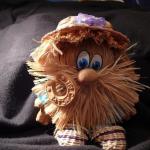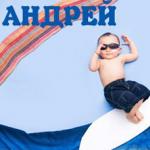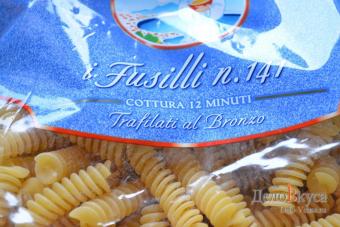The exhibition "Gustav Klimt. Egon Schiele. Drawings from the Albertina Museum (Vienna)" opens at the Pushkin State Museum of Fine Arts - about a hundred drawings by Klimt and Schiele will be shown in Russia for the first time
If it were possible to compile a world audience rating, then, as far as the art of the 20th century is concerned, Gustav Klimt (1862-1918) and Egon Schiele (1890-1918) would undoubtedly occupy the most enviable positions in it, losing only to Salvador Dali and, most likely in total, surpassing in popularity Rene Magritte, Maurits Escher and Frida Kahlo. The domestic viewer, who will certainly take away from Vienna a bag, umbrella or cup with Klimt’s “Kiss”, is no exception, which cannot be said about domestic art history, which has not yet produced a single serious book about Klimt or Schiele. However, even in their homeland, Klimt and Schiele’s path to art historical recognition was not so direct. In a word, the exhibition is doomed to success, even though only drawings will be brought and only from the Albertina, which, in terms of Klimt and Schiele, is the third Viennese collection in terms of quality and quantity: despite all the restitution scandals and seizures, the best Klimt is in the Belvedere, and the best Schiele is in at the Leopold Museum.
The creator of the museum, ophthalmologist Rudolf Leopold, in fact, saw a great artist in Egon Schiele, who, 30 years after his death, if remembered at all, was then exclusively as some kind of scandalous pornographer from the era of the first - Freudian - sexual revolution. Back in the 1950s, Leopold began collecting, exhibiting around the world and promoting his legacy, so that eventually - towards the end of the century - the founder of the curatorial profession, Harald Szeemann, took up Schiele’s art, and the former pornographer was finally canonized among the martyrs of the avant-garde. The craze for Klimt is also relatively new, although, of course, they never forgot about him, the first president and the very soul of the Secession. But still, of the three main artists of Viennese modernism, post-war Europe revered Oskar Kokoschka (1886-1980) much more (and if we talk about expressionist painting as such, then quite deservedly) - partly as one of the surviving and unbroken victims of fascism, because he was among the prominent exhibitors at the exhibition "Degenerate Art".
Strangely enough, after the Anschluss, neither the “Jewish” art of the Jew Klimt, who inserted far from Aryan faces of the big Viennese bourgeoisie into jewelry - gold and mosaic of gems - frames, nor the “unhealthy” art of the “child molester” Schiele, who exposed all the perversions of man, tormented by the “sexual question”, for show, they did not fall into disgrace. On the contrary, Klimt was practically canonized. Either the ideologists of the Third Reich reacted with sympathy to some of the deviances of the Viennese identity, or family ties in the highest echelons helped - film director Gustav Uczycki, the author of such a masterpiece of Nazi propaganda as the film “Homecoming” with Paula Wessely in the lead, declared himself the illegitimate son of Klimt roles. In 1942, Viennese newspapers vigorously celebrated the 80th anniversary of Klimt’s birth - meanwhile, his best paintings, requisitioned from Jewish collectors, were transferred to Reich museums, and less significant ones were dissolved in the collections of aesthetic party members, so that a ceremonial exhibition for the 25th anniversary from the day of Klimt's death, opened a year later in the Secession, one third consisted of confiscated goods. But after the war, the living Kokoschka, a participant in several “documenta,” eclipsed the late Klimt and Schiele for a long time - the criminal ornamentation of both was resurrected only in the too Viennese art of Friedensreich Hundertwasser.
Both Klimt and Schiele began to gradually return to the orbit of serious art historical interests in the 1970s, when what Hermann Broch called the “gay apocalypse,” Karl Kraus called the “doomsday laboratory,” and cultural historians called “Viennese Art Nouveau” became relevant topic. When the whole world, perhaps succumbing to millenarian temptations, suddenly began to study how from the tangle of national and social contradictions, from the discordance of languages and rhetoric, from the nerves of spiritual life strained to the limit, from asthenia, delirium and a clear consciousness of the doom of Kakania, so ironically named by Robert Musil according to the imperial-bureaucratic “k.u.k.”, “Kaiser’s and royal”, the miracle of this incredible cultural takeoff was born, the empire fading into oblivion. Cultural historians love Freudian metaphors to describe it, portraying, say, "Young Vienna" with its Jewish overtones as the literary unconscious in the ideological battle of Austrian Zionism and Austrian anti-Semitism. And Klimt and Schiele, who discovered the law of the identity of vision and possession, as a result of which the word “pornography”, which actually hung in the atmosphere of the era, condensed over their heads in the form of accusations almost more often than over the head of Arthur Schnitzler, naturally became a favorite subject for discussions about specific Viennese eroticism. And the fact that their erotic line, voluptuous and languid in the first and sadistic-neurotic in the second (and both were great draftsmen, so you shouldn’t be upset that only graphics are exhibited in Moscow), ends so prematurely in the fatal for Kakania and breathing Spanish flu 1918 -m, as if confirming historical and cultural speculations about the dialectical unity of libido and the death drive.
As for the new life after death, popular adoration fell on Klimt and Schiele relatively recently, largely thanks to the zeal of the Viennese tourist industry, which, having driven all the Habsburg myths to pieces, dismantled Sisi and mourned the double suicide of Crown Prince Rudolf and Maria von Vecher many times , set to work on this gold reserve. And she met the mutual understanding of the masters of popular culture - the personal lives of both are known to us in great detail thanks to bestsellers, blockbusters and other musicals. But Musil also believed that the so elegantly gilded Viennese culture was destined to descend into feuilleton and operetta.
"Gustav Klimt. Egon Schiele. Drawings from the Albertina Museum (Vienna). Pushkin State Museum of Fine Arts, Gallery of European and American Art of the 19th-20th centuries, from October 10 to January 14
The work “Reclining Nude Girl” at the exhibition of Gustav Klimt and Egon Schiele at the Pushkin Museum. A.S. Pushkin, October 2017
At the Pushkin Museum named after. A.S. Pushkin is hosting a large-scale exhibition of graphic works by Austrian artists Gustav Klimt and Egon Schiele from the collection of the Albertina Museum (Vienna). The founder of Viennese Art Nouveau, admirer of women, Gustav Klimt, and his student, preacher of Austrian expressionism, lover of teenagers, Egon Schiele - both artists explored the human body, its nature and beauty. Conservative contemporaries accused Klimt of excessive eroticism, and Schille of distributing pornography. The teacher and student died in the same year - in 1918, when Klimt was 55 years old and Schiele was 28. The exhibition at the Pushkin Museum will last until January 14. "Gazeta.Ru" talks about artists, their habits, life and death.

Gustav Klimt. Death and life
Klimt did not look like an artist at all: tall, powerful figure, strong arms, baggy clothes - his whole rough appearance resembled a peasant. A native of the Vienna suburb of Baumgarten, Gustav was the second of seven children in the poor family of the artist-engraver, jeweler Ernest Klimt and the failed musician Anna Klimt. He studied at the Vienna Arts and Crafts School at the Austrian Museum of Art and Industry, painted frescoes for theaters in Reichenberg, Rijeka, Karlovy Vary; worked on the design of the Burgtheater building and the Kunsthistorisches Museum. Honorary member of the Universities of Munich and Vienna, founder and president of the Vienna Secession.

Gustav Klimt. Virgo
Klimt loved women and never married. From 3 to 40 children are attributed to him - after the artist’s death, 14 people claimed rights to the inheritance.
The female body became not only the object of the artist’s passion, but also the main theme of his works. Klimt had a great sense of female nature and, with the help of outfits, turned any woman into a beauty. His styles became a discovery at the Venice Exhibition of 1910. Contemporaries, for their part, accused the artist of provocations and disregard for moral standards:
in their opinion, Klimt portrayed women too erotically and frankly.
For 27 years, the artist’s main muse remained fashion designer Emilia Flege - he came up with ornaments for her dresses, and she, despite Klimt’s relationships with other women, was with him until his last days.

Gustav Klimt. Golden Adele
Portrait of Klimt's mistress
Portrait of Ferdinand Bloch's wife, with whom Klimt had an affair, the artist painted for 4 years. During this time he made more than 100 sketches. Painting "Golden Adele", also known as the "Austrian Mona Lisa", became a masterpiece, but the novel, meanwhile, faded away. In 2006, the painting was acquired by Ronald Lauder, an American entrepreneur and founder of the New Gallery in New York. The price of the lot was a record amount for a work of painting - $135 million. In 2015, the film “Woman in Gold” was made about this work.

Gustav Klimt. Paintings for the university
Allegories of Klimt
In 1884, Klimt began extensive work on paintings for the ceiling of the assembly hall of the main building of the University of Vienna. 6 years later, in 1900, he presented the world with allegorical “faculty” paintings: “Philosophy”, “Medicine” and “Jurisprudence”. Viewers responded by criticizing the artist for his “pornographic themes” - the works never appeared at the university, ending up in a private collection after all the vicissitudes. In 1945, the paintings were destroyed in a fire at Immerhof Palace.

Gustav Klimt. Naked Truth
Klimt's truth
Painting “Naked Truth” became a challenge for society at the end of the 19th century. A full-length nude red-haired woman is depicted holding a mirror of truth in her hands, inviting viewers, as the artist intended, to look inside themselves. Above the mirror is a quote from the German poet Friedrich Schiller: “If you cannot please everyone with your deeds and your art, please few. Being liked by many is evil.”

Gustav Klimt. Kiss
Hitler Klimt
Adolf Hitler, who was fond of painting, once showed Klimt his works. The artist reacted favorably to the work of the future Fuhrer, and subsequently this meeting saved the paintings of the “Jewish artist” from destruction.

Egon Schiele. Nude self-portrait, grimace. 1910
Klimt and Schiele
Schiele met Klimt at the age of 17, while studying at the Academy of Fine Arts. Klimt took care of a student whom he considered “too talented”: he shared his models, bought and exchanged his drawings. Egon idolized the teacher and at first imitated him. But if Klimt’s works were criticized for being too erotic, Schiele was directly reproached for distributing child pornography. The artist depicted troubled teenagers in defiant frankness and detail, including girls who lived in his studio for a long time, as well as his younger sister Gerta, for whom he had strong feelings at the age of 16.
Schiele's first exhibition was held in 1908 in Klosterneuburg (with the participation of Klimt); in 1909, the artist's works were exhibited along with paintings by Munch, Van Gogh and Matisse at the Vienna Art Gallery. In addition to children, Schiele, passionate about the ideas of Freudianism and the study of human nature, loved to draw himself. His numerous caricatured grotesque self-portraits are known. The artist paid special attention to the hands and gestures - often sharp, nervous and sophisticated.

Egon Schiele. Dying mother
Schiele's mother
The son of a railway employee, Egon Schiele All his life he suffered from the loss of his father, who died when the young man was 15 years old. The future artist did not have a good relationship with his mother - she gave her son to the family of his guardian uncle.
The theme of death was present in Schiele's work throughout his life, including in the work "Dying Mother", which Egon wrote in 1910, when his mother was alive and well. The painting shows a pale woman with a bony hand and a rosy-cheeked child, who is separated from her mother by a black cocoon.

"Portrait of Valli" (1912)
Schiele Prison
In 1911, the artist’s 17-year-old model, former Klimt model Valli Neutzil, became the artist’s friend and model, and in 1912 Schiele spent several months in prison on charges of molesting a minor. There he created a series of 13 watercolors and drawings. The artist was philosophical about his conclusion and said that he felt “not guilt, but only purification.”
Valli's portraits became the artist's most notable works.

Egon Schiele. Family
Death of Schiele
In 1915, the artist broke up with Valerie and married a young schoolgirl, the daughter of a mechanic, Edith Harms, despite the protests of the girl’s family. Three years later, Edith died of the Spanish flu while pregnant. In his latest work - “ Family" - Schiele depicted himself, his wife and their unborn child. Three days later, the artist died from the same disease. He was 28 years old.
Scroll Down
1 && "cover" == "gallery"">
((currentSlide + 1)) / ((countSlides))
In 1918, as World War I was drawing to a close, a new threat loomed over Europe: the Spanish flu epidemic. Egon Schiele died from it, and nine months earlier, from pneumonia, his teacher Gustav Klimt.
Two masters worked in the same city and at the same time, but in different directions. One addressed the tenderness and beauty of the female body, the other addressed the aesthetics of the ugly and the theme of loneliness. But each of them challenged conservative society and left a mark on the world history of painting.
Together with the Pushkin Museum. A.S. Pushkin, who organized an exhibition of 96 works by Klimt and Schiele, TASS talks about the relationship between the two masters, their styles and drawings.
CLIMET: RECOGNITION AND THE PATH TO SECESSION
Klimt was born in 1862 on the outskirts of Vienna, in the family of gold engraver Ernst Klimt. He had two brothers, who later also became artists, and four sisters. From a young age, he found himself within the strict framework of academicism: Klimt received his first and only artistic education at the Vienna School of Arts and Crafts (Kunstgewerbeschule).
His early works had nothing in common with such paintings as Judith with the Head of Holofernes or The Kiss. Nevertheless, his talent and diligence made him famous already at the age of 26 - in 1888, the Emperor of Austria-Hungary, Franz Joseph I, awarded the artist the Golden Cross for the design of the court Burgtheater on the Ringstrasse in Vienna.
Six years later, Klimt received an order to paint three “faculty paintings” to decorate the main building of the state University of Vienna: “Philosophy”, “Medicine” and “Jurisprudence”.
These works, which have not survived to this day, marked Klimt's transition from academicism to modernism. True, they caused a big scandal: the public considered them openly erotic, if not pornographic, and the university refused to display the paintings on its walls.
While working on them, Klimt founded the "Vienna Secession" - an association of Viennese artists that accepted like-minded people who worked both within and outside the framework of traditional movements.
"Reclining Nude" by Gustav Klimt
“Klimt founded it because he saw the need to create an alternative organization of artists in order to introduce the Viennese public to the achievements of the latest Austrian art,” explains Elena Korotkikh, researcher at the department of art of European and American countries of the 19th and 20th centuries at the Pushkin Museum. A.S. Pushkin.
SCHIELE: YOUTH AND ACQUAINTANCE WITH THE MASTER
Just like Klimt, the young Egon Schiele went to the Kunstgewerbeschule. There he showed his drawings and was sent to the Vienna Academy of Fine Arts.
From childhood, Schiele opposed himself to society, starting with his own class at school.
“He changed schools several times, finding himself an outsider. He was successful mainly in physical education and drawing,” notes Korotkikh.
In 1909, he dropped out of school without receiving a full academic education.
True, the value of Schiele's unofficial art education is higher than academic education - he was patronized and protected by Gustav Klimt himself.
They met in 1907. Schiele was only 17 years old at that time, and Klimt had already gained worldwide fame. In the same year he began work on the film "The Kiss". This was the peak of the "golden period".
It was thanks to Klimt that Schiele’s paintings appeared in 1908 at an exhibition in Klosterneuburg, and in 1909 at an international art exhibition in Vienna.
Klimt passed on his knowledge to Schiele and guided him. But the young artist had his own special vision of the world and beauty, his own technique. And his life was completely different.
Drawings by Egon Schiele: “The Artist Max Oppenheimer” (1910), “Reclining Nude with Her Legs Tucked” (1918), “Model in Red” (1914)
EROTICS AND FREEDOM
From the collection of the Vienna Albertina Museum in the Pushkin Museum. A.S. Pushkin brought 47 works by Klimt and 49 by Schiele. To show their relationship, drawings from different periods were interspersed.
The relationship between the drawings is a direct consequence of the relationship between teacher and student. According to Elena Korotkikh, Klimt conveyed two main ideas to Schiele.
The first is a more frank interpretation of eroticism.
“Klimt was interested in exploring female sexuality, revealed it and, in a way, was the first to take the blow. Schiele and [Oscar] Kokoschka followed in his footsteps,” says Korotkikh.
At the same time, Klimt and Schiele’s approach to erotica itself was completely different. Klimt treats erotica with great tenderness.
“His feminine nature is very attractive; physical beauty is important to Klimt,” says a researcher at the Pushkin Museum. A.S. Pushkin.
Schiele's focus is on the aesthetics of the ugly. In this sense, Klimt and Schiele are complete opposites.
The second idea is that the artist is not obliged to explain anything and can do what he wants and how he wants. This approach was very useful for Schiele as an expressionist. And he took full advantage of it.
LONELINESS AND PROBLEMS WITH THE LAW
In Schiele's works, unlike Klimt, in addition to opposition, the motif of loneliness is constantly present. Many of the artist’s drawings do not have any background; they are divorced from the environment.
The artist demonstrates a separation from gravity, from reality. The motif of the lost child, which was present from the very beginning, the motif of isolation is of paramount importance for him. The viewer does not know what is happening around the object chosen by the artist.
In 1912, Schiele served just over three weeks in prison. The court found the artist guilty of making his pornographic drawings available to a 12-year-old girl who appeared on his doorstep and asked for help.
Schiele and his constant companion Valli Neuzil (a former model for Gustav Klimt) left her for the night, then took the girl with them to Vienna (she said that her grandmother lived in the capital). Meanwhile, the girl's father contacted the police. When law enforcement officers came to the artist’s house, they found dozens of erotic drawings in his possession.
Schiele was put in a detention center for distributing pornography and molesting minors. But, fortunately, the charges of seduction and kidnapping were dismissed at trial.
“Perhaps then Schiele realized that he could face serious consequences. He was used to opposing everyone artistically, but did not expect such a turn of events,” says Elena Korotkikh.
Drawings by Egon Schiele
DRAWINGS BUT NOT PAINTINGS
Among the works presented at the exhibition in Moscow, almost all 96 are drawings. Despite the fact that Gustav Klimt is now better known to the world as a painter, his talent as a draftsman is just as enormous. According to the writer Mariana Bisanz-Prakken, during Klimt’s lifetime his works on paper were “often exhibited only as a decorative addition to his paintings,” but are now valued much more highly.
As for Schiele, the artist himself presented his drawings as independent works of art.
As noted by Klaus Albrecht Schröder, director of the Albertina Museum in Vienna, works on paper were less accessible to a wider audience, which guaranteed artists the freedom to choose subjects and interpret them.
It was not without reason that the drawings of Klimt and - especially - Schiele aroused criticism and misunderstanding among the public of the early 20th century. Recommended age for visiting the exhibition at the Pushkin Museum. A.S. Pushkin - 18+ or at the discretion of the parents.
Drawings by Klimt and Schiele have never been exhibited in such a large volume in Russia before. As exhibition curator Vitaly Mishin believes, “reproductions in books and on the Internet do not convey even a small fraction of the artistic qualities inherent in the drawings of these great Austrian masters.”
We worked on the material
((role.role)): ((role.fio))
Reproductions of paintings were provided by the Pushkin Museum. A.S. Pushkin.
Photos used in the material: The Albertina Museum, Vienna, TASS Photo Chronicle (Roman Kanashchuk, Sergey Bobylev), Alexander Avilov/AGN "Moscow", adoc-photos/Corbis via Getty Images.
The Pushkin Museum displays the megastars of the Austrian avant-garde
Pushkin Museum im. Pushkina is the first in Russia to introduce the works of the leaders of the Austrian avant-garde Gustav Klimt and Egon Schiele, presenting 100 candid sheets to the viewer. They are from the Albertina Museum in Vienna, which has a solid collection of masters. By opposing the academic tradition, they were ahead of their time. Their creations, which provoke admiration today, often caused shock at the turn of the 19th and 20th centuries.
Marina Loshak against the background of “Reclining Nude with Her Legs Tucked” by Egon Schiele. Photo courtesy of MSK Agency.
This is a rare case for Pushkinsky when the recommended age of visitors is 18+. The lens shows nudes, albeit presented as elegantly and delicately as possible. Museum director Marina Loshak even notes jokingly (or not so much) that “she discovers with horror how a serious internal censor is growing inside her, who works harder than anyone.” “We understood that we needed to maintain the status quo in our society and not upset too many nervous, emotional believers. But they could not help but show something without which the world history of art of the 20th century is unthinkable. This is a lonely, suffering and complex artist who perceives life.”
Klimt and Schiele are connected by much more than the titles of phenomenal draftsmen who died in the same year - 1918 (a series of their exhibitions will be held around the world, the first of which is shown in Moscow even before Boston and London, which causes special pride). The masters were closely united not only by an aesthetic connection, but also by a spiritual one. Klimt, a generation ahead of Schiele in age, became an idol for the young artist. Therefore, at first he imitated authority, but we must give him his due, he quickly found his own language and just as loudly revolutionized the depiction of nudes.
The topic is not new since antiquity. But the Austrian masters managed to find in it such plasticity, volumes, impressions that no one had touched before. At the exhibition, this is manifested through a successful selection of items, including not only brands, but also something that can surprise the most sophisticated specialist. All these works are united by movement. It permeates almost every figure depicted. Hence the endless definitions in the titles: bowed, taking off her shirt, turned, leaning on her hand, struggling... Some figures are clearly depicted lying down, but in the drawing they are turned vertically. This is dictated by the artist's signature. Thus, horizontal figures, contrary to the laws of gravity, become helpless and lost.

Gustav Klimt. A woman's face, cheek pressed to her hands. Photo courtesy of MSK Agency.
In the early period, Klimt sometimes made dozens of sketches, capturing the facets of movement and plasticity of nude figures, confirms exhibition curator Vitaly Mishin. - He seemed to be groping for a plastic formula that would express the emotional state of the characters or an abstract philosophical idea. Among such drawings at the exhibition, a sketch of a floating figure catches the eye. For Klimt, this motive was largely metaphysical in nature.
With Schiele everything is more exaggerated. Strong angles, unusual turns, amazing bends. If these are several figures, then often their bodies are intertwined. The master always had at his disposal one or two models who lived nearby, and he observed them from afar, recording poses and states in nude studies. These were professional models who were not too far from prostitutes in the social hierarchy. They were satisfied with the work. And in Klimt’s sketches of female portraits, as a rule, they are representatives of the upper classes. There is no hint of eroticism here: by contrast, only severity and secularity reign. But not all models liked it, as happened with Margaret Stonborough-Wittgenstein. It is still unknown why the customer refused to accept her portrait.
The absence of Klimt's work in the home of a wealthy family, according to the curator on the Austrian side, Christopher Metzger (Albertina Museum), was considered a sign of bad taste. However, not only the upper class was interested in the master’s work, as evidenced by his paintings of museums and theaters for people of modest means. There was also widespread interest in Schiele’s works, but not everyone understood his models with deformities, emaciation and baseness. The features of his girls are often naked so openly that this, as Professor Serge Sabarsky, who was the first to exhibit the artist in world museums, once rightly noted, will turn Schiele into a victim of pseudo-analysts. This is what happened after one of them saw a naked pregnant woman performed by Schiele, who was also at the exhibition.
Klimt was also accused of perversion of tastes and obscenity. His “Medicine” and “Jurisprudence” were branded ugliness, “excessive perversity” and called pornographic. They exclaimed that his paintings could illustrate the works of Freud; that the women he depicts look as if they want to castrate men. But things came to a scandal only when he presented his first work, “Philosophy.” It was seen by more than a hundred professors, 87 of whom signed a letter sent to the Ministry of Education, where they accused the artist of “expressing unclear ideas using vague forms” and demanded that the order be taken away from him. It is curious that Philosophy was soon awarded a gold medal at the World Exhibition in Paris.

Irina Antonova against the background of "Eva Steiner" by Egon Schiele. Photo courtesy of MSK Agency.
For our viewer, much here will be unexpected, subject to discussion, awareness and acceptance,” sums up the president of the museum, Irina Antonova. - Like all turn-of-the-century artists, Klimt and Schiele evoke drama. And it doesn’t matter whether they depict themselves, nudes, or landscapes. Each time there is a dramatic intensity of saying goodbye to the old and excitement in the face of the unknown. What's coming? They did not know. But a century later, we also don’t really know what happened. What has arrived has not yet developed into a world of epoch-making volume. But the great artists, who of course are Klimt and Schiele, help us feel where the world is heading.
The day after the opening of the exhibition at the Gallery of European and American Art of the 19th and 20th centuries, commentators asked: “Where are the genitals?” — they say that Schiele has much more explicit paintings that could be shown under the heading “18+.” However, this figure is not a limitation, but a recommendation. Moving more than a hundred works by artists from the Vienna Albertina to Moscow, Pushkinsky’s management, of course, did not forget about the impressionability of some activists. Ninety-nine years after the death of both artists, museum workers still have concerns that their work may be met with hostility. “What can we say about what society was like at the turn of the 19th and 20th centuries,” says exhibition curator Vitaly Mishin, “looking at the works of Viennese modernists, which today are perceived as a historical fact, we can hardly imagine with what eyes their contemporaries looked at them artists."
There is no “Kiss” in Pushkinsky: Klimt’s works are represented mainly by graphic sketches on paper, in which one can only guess the future golden swirls around Adele Bloch-Bauer’s dress, but the plasticity of these figures, barely outlined in pencil, makes it clear how the artist developed a new canon, announcing modernism . He worked like a craftsman: he painted a lot every day; his legacy totals two and a half thousand sheets, not counting the works donated and torn by his own hand. Klimt sometimes did not take into account the opinions of customers. Sketches for Faculty Works are all that remains of four controversial paintings that burned during World War II. They were supposed to decorate the ceiling of the University of Vienna, but the professors refused to accept them: instead of life-affirming allegories, which were supposed to inspire awe in students in the temple of knowledge, there were conflicting plots and overly naturalistic images of people. It would seem that what is special about the naked female figure in the painting “Medicine”: around the same years, Jean-Augustus-Dominique Ingres painted full-length nudes for the bourgeoisie. According to Mishin, the angle - the view from below - was considered outrageous. By the way, Klimt used this angle so that the figure did not stand firmly on the ground, but “hovered” above it.
“Seated Half-Nude,” which is destined to turn into the predatory “Salome,” was created under the influence of Freud’s ideas: for Klimt, sex, blood and death were inseparable. Next to his light and seemingly sleepy figures are Schiele’s physiological, broken models, painted in bold lines. The young artist “grew up” on Klimt, but soon outgrew him. “He abandoned aestheticization in favor of naturalism and expressiveness,” Mishin leads the guests to “Portrait of a Red-Haired Girl” with yellow animal eyes and outstretched fingers resembling claws.
“He destroys the ideal of beauty, and what was considered anti-aesthetic enters the sphere of art and is recognized as an aesthetic principle,” comments the curator of the work, Schiele. “In his children’s portraits, children appear sophisticated beyond their age; there is some kind of trouble in them.” Schiele looked at people with unceremonious curiosity, making some teenage punk his sitter. But the artist’s view of himself was radically different: Schiele depicted himself even more broken, as if cramped—and naked. He seemed to be trying on different roles, portraying his own grimaces and poor coordination.
He paid for inviting teenagers to the workshop. He was accused of corrupting morals - teenagers could see sketches of erotic content laid out everywhere - and was sent to prison for three weeks. “Schiele believed that he, as an artist, was allowed more than an ordinary person; he disdained conventions and was terribly disappointed in society, which showed him his place like that. He experienced this as a monstrous injustice,” says Mishin. His faithful friend handed over drawing supplies and oranges to the cell. According to the artist's patron and publisher of his first biography, Arthur Rössler, these oranges were, one might say, the only source of light in the chamber. Looking at them, Schiele dreamed of leaving for the shores of the Adriatic. Much later than the sad episode, he painted an expressive gouache - a still life of three oranges on a dirty brown background was called “My path lies over the abyss.” Next to this gouache hangs an image of a rather freely painted ship in a greenish patch of water - the plot of a wish come true.
Exhibition “Gustav Klimt. Egon Schiele. Drawings from the Albertina Museum" will run until January 14.





